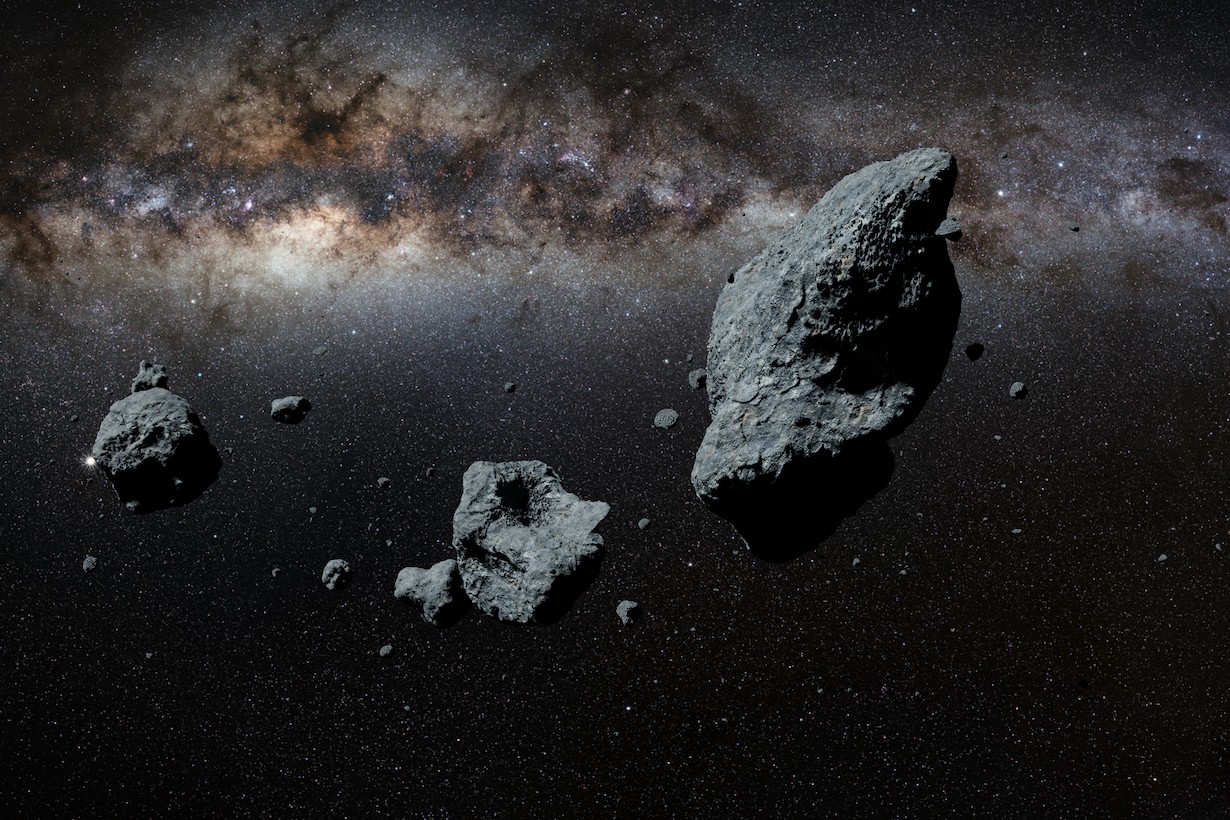CLOSE
About Elements
TANAKA is a leading company in the field of precious metals.
Advanced materials and solutions that support societal progress, the development stories behind them, the voices of engineers, and our management philosophy and vision—
Elements is an online media platform that shares insights that lead to a better society and a more prosperous future for the planet under the slogan “Mastering Precious Metals.”

Space Mining’s Best Prospect Is VC Money, Not Asteroid Gold

A small slice of Piguem Nonralta sits on Matt Gialich’s desk. The metallic ball, roughly the size of a doughnut hole, was discovered in Argentina in 1576 when Spanish colonizers went searching for iron ore and stumbled on the scattered remnants of a 4,000-year-old meteor shower. Piguem Nonralta, the name the Indigenous population gave to the asteroid craters, roughly translates to “field of heaven.” Gialich, the 37-year-old entrepreneur at the helm of a startup seeking to mine asteroids, keeps the ancient nugget at his office in Pasadena, California, as a reminder of his company’s celestial ambitions.
“These are very, very lucrative sources of ore,” Gialich says, holding the orbital tchotchke to eye level. The meteors contain iron and traces of elements such as iridium, one of the rarest minerals in the Earth’s crust. His company, AstroForge Inc., is among several startups that have studied the metallic composition of fallen asteroids and now want to mine them in outer space.
The idea isn’t new. Asteroid mining companies have tried for decades to harvest metals while attracting heaps of cash from big-name investors such as Titanic filmmaker James Cameron and Google’s Larry Page. So far, nobody has succeeded. Most space miners have either gone bust or sold out to bigger companies. Planetary Resources, a buzzy startup that attracted more than $50 million in financing to extract metals and water from nearby asteroids, crashed and burned after about a decade in operation, and was eventually acquired by a blockchain company in 2018.
Yet fresh capital continues to flow into space mining ventures. AstroForge raised $13 million in 2022 to launch two missions to space. Lunar Outpost, a Colorado startup spun out from the Colorado School of Mines that designs mineral prospecting technology, raised $12 million last year to develop a line of robotic lunar rovers. The nascent sector has been buoyed by recent exploratory missions such as NASA’s Osiris-REx, which in September collected samples from a nearby asteroid and returned them to Earth for study. The space mineral hunters have also benefited from NASA initiatives to fund asteroid-mining research and even the introduction of an asteroid mining degree at the Colorado School of Mines. Neil deGrasse Tyson once predicted the first trillionaire will be “the person who exploits the natural resources on asteroids.”
The enthusiasm of astro miners also reflects an earthly reality: Deposits of rare earth elements and platinum group metals (PGMs) are hard to find—and harder yet to transform into mines. They’re used in everything from dental fillings to catalytic converters. Iridium, required for spark plugs, is so rare that only about three tons are produced each year, according to the Royal Society of Chemistry in London. The mining industry has repeatedly warned that more key minerals are needed to meet growing demand for cleaner energy products such as electric vehicles, solar panels and wind turbines.
Some startups have sought to collect raw materials on asteroids and return the unfinished ore to Earth before refining it—though the largest amount ever collected from an asteroid was 250 grams from NASA’s Osiris-REx mission, making any major haul improbable. AstroForge wants to develop fully automated technology that can both collect ore from asteroids and refine it before returning with the finished product. The concept has sparked interest at NASA, where the space agency’s Technology Transfer Program lists a patent for “modular” refining systems in space.
Yet there’s widespread skepticism that space mining can move beyond science fiction in the foreseeable future. While the price tag of space exploration has declined drastically—NASA says the cost of launching rockets fell by 92% from 2000 to 2018—the outlay for extracting galactic resources remains astronomical. Prices of metals such as platinum or palladium would need to skyrocket for the ventures to pay off, and there’s little to indicate that asteroid miners could extract enough metal to supplant Earth-based mining in any meaningful way. Bloomberg Opinion columnist Javier Blas recently calculated that the price of a precious metal such as gold would need to jump 140,000-fold for astro mining to become profitable.
“Mining precious metals from asteroids in the next 10 years is just nuts,” says Joel Sercel, chief executive officer of TransAstra, a space logistics startup that recently won a NASA contract to manufacture technology to capture galactic debris. TransAstra is making similar efforts to identify and extract resources in space, though Sercel acknowledges that the goals won’t be easily achieved.
Still, the skepticism hasn’t dissuaded many space executives, who point to rapid advancements in technology and innovations from companies such as Elon Musk’s Space Exploration Technologies Corp. as evidence of what’s possible. Earlier this year AstroForge announced plans to launch two missions—one in October to test-fire rockets in space, and the second early next year to send a rocket called Brokkr-2 on a nine-month journey to a distant asteroid. With the advent of innovations such as cheaper “rideshare” missions to space, offered by Musk’s SpaceX, Gialich says that—over time—astro mining will become increasingly plausible.
“Let’s be honest about what we’re doing here and why this can happen: The cost of launching to space has dropped dramatically in the last 10 years,” says Gialich. “We want to show that this is different.”Read next: Drug Companies Explore Making Some of Their Most Lucrative Drugs in Space
This article was written by Jacob Lorinc from Bloomberg and was legally licensed through the DiveMarketplace by Industry Dive. Please direct all licensing questions to legal@industrydive.com.
![]()







